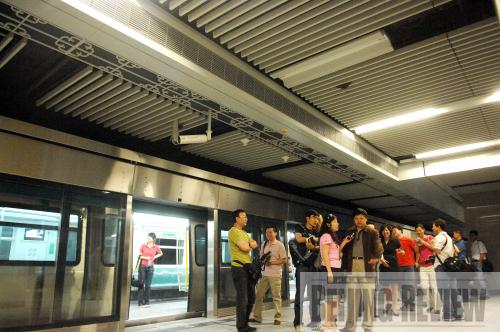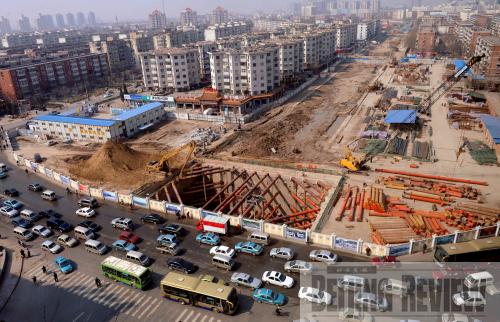|
 |
|
GRAND TOUR: Beijing's Subway Line 4 facilities open to press at Ping'anli Station on May 31. The new subway line started trial operations that day and will be put into full operation on September 28 (XINHUA) |
It took a lot of planning and hard work to begin construction on the first subway line in Zhengzhou. But on June 6, construction began on Subway Line 1 in the capital of central China's Henan Province. The city's planners first applied nine years ago to the State Council, the country's cabinet, to build a subway system. It was not until February this year when plans for subway lines 1 and 2 were approved. The work makes Zhengzhou China's 19th city to build a subway transit system.
But Zhengzhou is only one of the many Chinese cities whose plans to build subways were recently approved by the State Council. A senior official at the Ministry of Housing and Urban-Rural Development (MOHURD) said in August that as many as 79 subway projects in 22 cities have been approved to begin construction.
China's subway development is moving forward rapidly and at a scale that no other country has matched.
Fast development
Beijing's Subway Line 4, the capital's ninth, will officially begin operations on September 28. But it was only 40 years ago, on October 1, 1969, when China's first subway train let out from Beijing's Gucheng Station as part of the city's initial phase of development. That track now forms parts of Beijing's present lines 1 and 2.
After four decades of development, China now boasts rapid transit rail networks in Beijing, Shanghai, Tianjin municipalities and Guangzhou, capital of Guangdong Province.
 |
|
SPEEDING UP: Tianjin's Subway Line 3 is under construction at the site of the future Wangdingdi Station in March (LIU HAIFENG) | China had 29 urban mass transit lines in 10 cities at the end of 2008, with tracks totaling 776 km and an annual traffic volume reaching 2.21 billion passengers, said Lu Kehua, Director of the Department of Urban Construction of MOHURD.
Plans were also approved to build subway lines in Fuzhou, capital of southeast China's Fujian Province, on June 3, in Chongqing Municipality on June 26 and in Nanchang, capital of Jiangxi Province, on July 24.
About 50 subways are currently under construction in 15 cities with a total track mileage of 1,154 km. With the newly approved lines that have not yet begun construction, Lu said there would be 158 subway lines in China by 2015. Their combined length will total over 4,189 km. The lines are expected to cost 882 billion yuan ($129 billion), Lu said.
Subway economy
The construction surge is partly the result of China's strategy to stimulate domestic demand, said Wang Qingyun, Director of the Department of Basic Industries at the National Development and Reform Commission.
"Subway construction can promote investment in fixed assets over the short term, which can reduce the influence of the international financial crisis on China's economy," he said.
The scale of investment associated with the subway construction will amount to more than 1 trillion yuan ($146 billion) by 2020, he said.
The State Council in April adjusted the investment proportion of the projects of fixed assets in order to ease the financing gap of 4 trillion yuan ($586 billion) stimulus package and the urban rail transportation was one of the industries getting the biggest benefits from it.
Sources at the Beijing Municipal Commission of Urban Planning said the Beijing Municipal Government would invest 120-150 billion yuan ($18-22 billion) in 2009-10 to stimulate the local economy, of which 90 billion yuan ($13.18 billion) will be directed to rail transit construction.
| 